Sept. 10 to Sept. 16
It was no ordinary voyage when the Meishan cargo ship set out from Guangzhou for Nagoya on May 27, 1979.
Although it appeared to be just another Chinese ship carrying goods of no significance, it was equipped with anti-aircraft artillery, heavy machine guns, military radars and rifles. The crew members all underwent military training and were armed with pistols, homemade molotov cocktails and “other emergency weapons,” according to the Chinese publication China Archives News (中國檔案報). Government and military personnel were also on board, and the People’s Liberation Army Navy were ready to assist from the coast of Fujian Province, directly opposite from Taiwan.
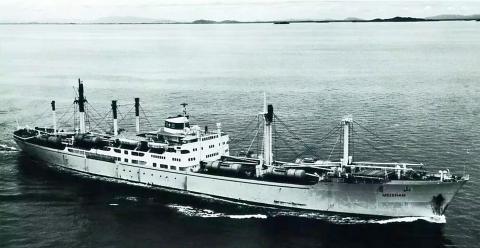
Photo courtesy of google
“We received orders to control our speed and cross the Taiwan Strait in plain daylight so they could see our five-star flag clearly,” a crew member said. “We were told to report our exact location loudly and clearly every hour, so they could hear it too.”
The “they” referred to the Taiwanese authorities, who had blocked off Chinese access to the Taiwan Strait since 1949. This essentially cut off direct access between Chinese ports in the north and south until 1968, when ships began taking the long route through the Philippines and around Taiwan through the Pacific Ocean.
Of course, Taiwan couldn’t have done this without US support. But with the US diplomatically abandoning Taiwan for China on Jan. 1, 1979, things were no longer the same by the time the Meishan set out.
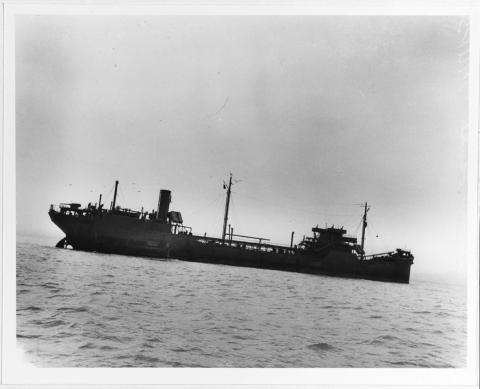
Photo courtesy of nvail history and heritage command
Taiwan did send a fighter plane and two warships when the Chinese ship neared Kinmen, but they did not take action. By nightfall, the Meishan had successfully traversed the Taiwan Strait. On Sept. 12, Taiwan officially repealed the blockade law.
CONFLICT ON THE HIGH SEAS
What the Chinese Nationalist Party (KMT) insisted on calling a “closure” began in June 1949, near the tail end of the Chinese Civil War, by restricting any ships from leaving Communist-controlled ports. The KMT was against the term “blockade” because it implied that it was imposed against another country, and then they still claimed that they ruled the entire China.
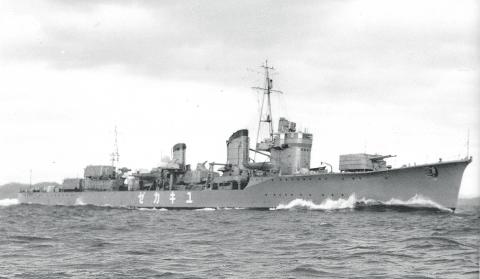
Photo courtesy of Wikimedia Commons
When Shanghai fell to the Chinese Communist Party (CCP) in May 1949, the KMT took action and blocked the coastline stretching from Fujian to Hebei provinces using military force, sincethey were afraid that the CCP would use the strong foreign presence in the various ports to assert their victory to the world.
Most of the KMT’s allies were against the move, particularly the UK, since the blockade would disrupt ships leaving from Hong Kong. It did not seem particularly effective anyhow, as in August, the British Edith Moller freighter successfully broke through to Shanghai. When the crew tried to duplicate the feat again two weeks later, the KMT’s Republic of China (ROC) Navy seized the ship, documented the passengers and ship log and checked for CCP property before letting it go. Two US ships also made it in September, and although they were accosted by the KMT when they left port, they were eventually released without a hitch.
The CCP continued to gain ground in the ensuing months. By February 1950, the KMT had “closed” the entire coastline of China. Although KMT leader Chiang Kai-shek (蔣介石) claimed that the closure “has greatly impacted the Communist bandits,” records show that his troops were mostly operational along the coastal areas of Fujian and Guangdong. A total of 22 conflicts between the ROC navy and foreign freighters took place in the first half of 1950, more than half of them British.
“While the US government tried to dissuade its ships from entering the area, the British not only sent warships as escorts, they also directly confronted the ROC Navy. The British were unwilling to give up their long-time interests off the coast of China, while the KMT especially detested the British since they were among the first to recognize the CCP,” stated a China Warships History Monthly article.
The Korean War broke out in in June 1950, and Chiang promised the US that he would end the “closure.” The US then formed the Taiwan Patrol Force to prevent both sides from attacking each other — although records show that the ROC Navy continued to harass or seize foreign cargo ships for the next two years. The US blockade was lifted in 1953, upon which Chiang resumed his efforts to retake China.
THE TUAPSE INCIDENT
Although the UN sanctioned a collective trade embargo against China, British, Soviet and other Eastern Bloc ships still sailed in and out of China. In 1953, the ROC Navy seized two Polish ships transporting oil and other goods to China. They were escorted to Taiwan and confiscated.
Lin Hung-yi (林宏一) writes in his study on the topic that the next seizure, that of the Soviet tanker Tuapse, was definitely a “joint effort” between the KMT and the US. Records show that then-US secretary of state John Foster Dulles suggested “letting the ROC take care” of the Tuapse, which was transporting jet fuel from the Middle East to Shanghai. The US would provide the ROC Navy all the information it needed, but would keep its hands clean.
After much deliberation, Chiang agreed to take the job. On June 23, 1954, several ROC warships captured the Tuapse. The Soviets blamed the US immediately. Due to Soviet pressure, Taiwan not having the legal right to seize foreign ships (despite the US staying mum on the two Polish vessels) and fear of retaliation, the US asked the KMT to release the ship. But Chiang refused, detaining the Tuapse and its entire crew in Taiwan.
The sailors were persuaded to “seek asylum,” and those who refused were eventually sent back to the USSR. Seven ended up staying in Taiwan to help with Cold War efforts, but Lin writes that they did not adjust well, sneaking into the US Embassy in 1966 and 1970 to request repatriation. But they remained stuck in Taiwan, with one committing suicide in 1975 and two dying of illness. Of the remaining sailors, three finally went home in 1988 while one chose to stay in Taiwan.
Although the ROC Air Force sank a British vessel in the beginning of 1955, these incidents gradually decreased, finally ceasing in 1960. Lin writes that this was due to the effective area of the “closure” being reduced to Fuzhou and Xiamen — which were opposite the KMT-controlled islands of Kinmen and Matsu. This did not have much effect on foreign ships, but it did mostly block off direct traffic between north and south China for many years.
When the Meishan crossed the Taiwan Strait in 1979, however, the ROC Navy was unable to do a thing.
Taiwan in Time, a column about Taiwan’s history that is published every Sunday, spotlights important or interesting events around the nation that have anniversaries this week.
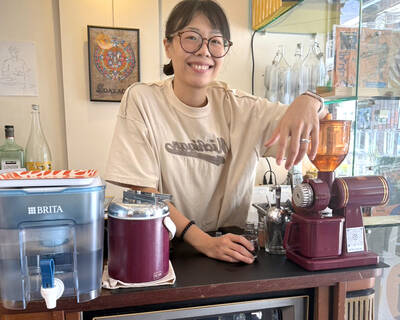
Cheng Ching-hsiang (鄭青祥) turned a small triangle of concrete jammed between two old shops into a cool little bar called 9dimension. In front of the shop, a steampunk-like structure was welded by himself to serve as a booth where he prepares cocktails. “Yancheng used to be just old people,” he says, “but now young people are coming and creating the New Yancheng.” Around the corner, Yu Hsiu-jao (饒毓琇), opened Tiny Cafe. True to its name, it is the size of a cupboard and serves cold-brewed coffee. “Small shops are so special and have personality,” she says, “people come to Yancheng to find such treasures.” She
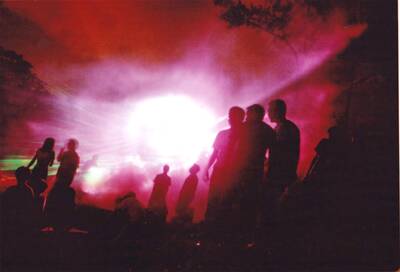
In July of 1995, a group of local DJs began posting an event flyer around Taipei. It was cheaply photocopied and nearly all in English, with a hand-drawn map on the back and, on the front, a big red hand print alongside one prominent line of text, “Finally… THE PARTY.” The map led to a remote floodplain in Taipei County (now New Taipei City) just across the Tamsui River from Taipei. The organizers got permission from no one. They just drove up in a blue Taiwanese pickup truck, set up a generator, two speakers, two turntables and a mixer. They
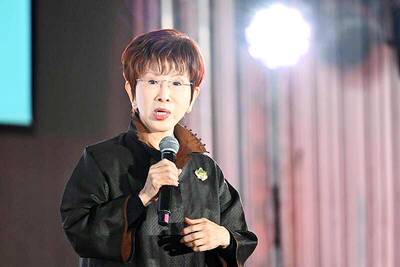
Former Chinese Nationalist Party (KMT) chairwoman Hung Hsiu-chu’s (洪秀柱) attendance at the Chinese Communist Party’s (CPP) “Chinese People’s War of Resistance Against Japanese Aggression and the World Anti-Fascist War” parade in Beijing is infuriating, embarrassing and insulting to nearly everyone in Taiwan, and Taiwan’s friends and allies. She is also ripping off bandages and pouring salt into old wounds. In the process she managed to tie both the KMT and the Democratic Progressive Party (DPP) into uncomfortable knots. The KMT continues to honor their heroic fighters, who defended China against the invading Japanese Empire, which inflicted unimaginable horrors on the
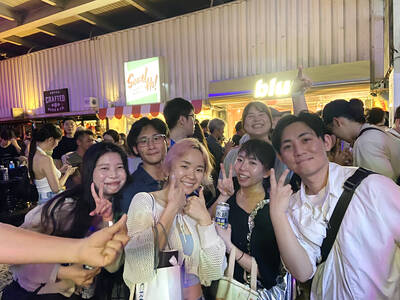
Hannah Liao (廖宸萱) recalls the harassment she experienced on dating apps, an experience that left her frightened and disgusted. “I’ve tried some voice-based dating apps,” the 30-year-old says. “Right away, some guys would say things like, ‘Wanna talk dirty?’ or ‘Wanna suck my d**k?’” she says. Liao’s story is not unique. Ministry of Health and Welfare statistics show a more than 50 percent rise in sexual assault cases related to online encounters over the past five years. In 2023 alone, women comprised 7,698 of the 9,413 reported victims. Faced with a dating landscape that can feel more predatory than promising, many in